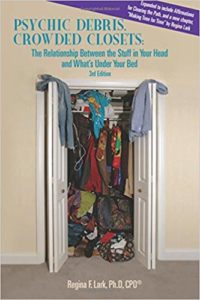
Whether you are looking to declutter your own home or simply clearing your house in preparation for sale, the process is often tiring and emotionally consuming. It is even more challenging when you are clearing a deceased estate for settlement or sale with your loved ones items still left inside.
Besides these challenges, estate clearing is usually time-sensitive. Each project is different and has specific timelines and goals surrounding it. But with the right tips, you can manage the whole process without feeling emotionally drained.
Here are five estate clearing secrets
1. Formulate a plan
For an effective estate clearing, plan and start early. First, you should know when you will start and the time to finish each task. This will reduce the burden as settlement or sale days approach. Try to estimate the time needed to clear the whole house. Depending on the amount of possessions and size of the house, allocate at least a half a day for clearing each room. The process could take up to a week or even two weeks.
2. Find and keep aside all key documents
Before moving things in different rooms, it is crucial to find and secure key documents such as wills, bank statements, certificates of titles/property deeds, insurance policies, stocks certificates, tax returns, and receipts. Executors and solicitors of the estate may also use them in winding up any legal and financial matters related to the estate.
While searching for these documents, make sure to pay attention to details. Sometimes, people may store valuable items in unlikely places. It is, therefore, important to take time and search all the closets, including drawers, coat pockets, and high shelves.
3. Set aside wanted from unwanted
After finding the right documents, the next stage is to identify items that you want to keep and those that you would discard. The best way to simplify the process is to have family members identify the items they would like to have from the estate. This way, the remaining possessions can be removed more efficiently. On top of this, try to remove the wanted items first. It is also less burdensome to clear one room at a time. Clearing one completely before moving to the next will enable you to work methodically and stay on track.
With the items that you don’t want, categorize them into three subcategories: items to be given away, items to be sold, and items to be recycled. Selling some of the items will not only simplify the clearance process, but it will also bring in revenue, which you can use to offset some of the clearance costs.
4. Selling and donation process
Once you have sorted the items into different piles, you can then go ahead with the removal. It is better to have auctioneers or second-hand dealers come first. To speed up the process, engage a reputable firm to give you quotes for valuable items. After that you can donate what remains.
The good thing with items that go to charity is that companies usually come and collect the items from your property. Even if they can’t come, some local charities have small stores where you can take your donations. For the items that need to be disposed of, you can engage your local council to see if you can take advantage of their services before engaging a rubbish removal firm.
Alternatively, you can organize a garage sale. The only challenge with this approach is that it requires some planning.
5. Get professional help
If the estate has a substantial amount of valuable items, it is usually worthwhile to engage a credible estate clearing service. Apart from being physically and emotionally straining, some tasks are just time-consuming and monotonous. Other tasks such as moving furniture, cleaning, and hauling items require physical exertions. This is where professional estate clearing services could come in handy.
The main benefit of working with a property clearing firm is that it can offer its clients a customizable and comprehensive package that manages all the activities relating to this complex task. Trustworthy firms usually have a network of service providers who could offer useful support during the process. Moreover, they understand the logistical and emotional nightmares that come with estate clearance.
They will discuss with you about your priorities in the estate clearing process, determine if there is a need for maintenance, help you with selling valuable possessions, and may recommend a sales or rental agent.
Use A Clear Path as your estate clearing partner
If you are dealing with the daunting task of clearing an estate, you need a professional partner who is patient and understanding. With many years of experience helping our clients with estate clearing tasks, we understand the emotion and challenges that come with the process. Let our well-trained crew relieve you of these stresses.










 attractive it will be to customers, and therefore earn more money. If the estimated increase in the customer base or sales is higher than the expenses incurred when renting an office space, relocating might actually help your business to grow.
attractive it will be to customers, and therefore earn more money. If the estimated increase in the customer base or sales is higher than the expenses incurred when renting an office space, relocating might actually help your business to grow.


 How do you handle these items?
How do you handle these items? should ask yourself, “Do I really need to take everything with me?” Most of the time the answer is no. A great way to de-clutter and only take the items you need is by hiring someone to help you. A professional de-clutter expert can come in and help you weed out those unused items. You can then give them to a charity of your choice and get a nice tax deduction.
should ask yourself, “Do I really need to take everything with me?” Most of the time the answer is no. A great way to de-clutter and only take the items you need is by hiring someone to help you. A professional de-clutter expert can come in and help you weed out those unused items. You can then give them to a charity of your choice and get a nice tax deduction.